Wilma Malcolmson is one of my favourite knitwear designers in Shetland. Her subtle colour combinations are instantly recognisable and her garments are simply stunning. Wilma has been on the Shetland textile scene for a long time and her expertise and skill are highly valued, not just locally but internationally too.
And as Wilma is one of the Shetland Wool Adventures tutors, going to her wonderful studio and spending time with her is always a highlight. And there is always the temptation to shop… I can never resist and I’m a proud owner of several pieces designed by her. I love wearing them as they are versatile and comfortable and they always spark interest and invite plenty compliments.
But mostly I love Wilma’s passion for Shetland and the local knitting tradition. She is a fantastic ambassador for Shetland and the perfect choice for this year’s Shetland Wool Week patron. Congratulations Wilma!
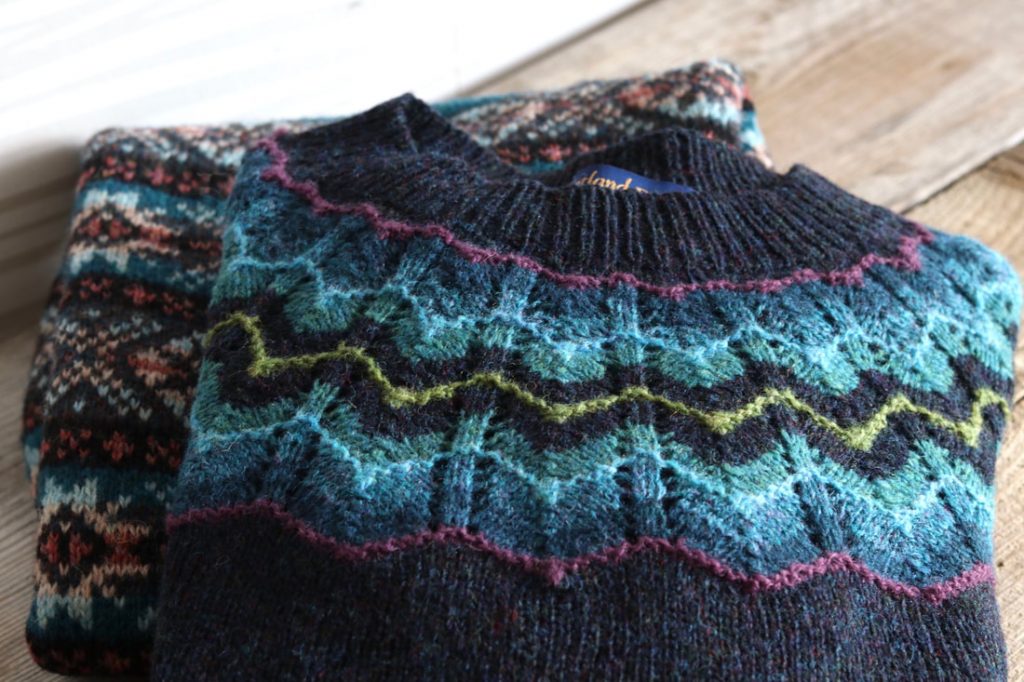
My first question for you, Wilma, is: when and how did you start your business?
I had been knitting for as long as I can remember but my business formally started in 1982 when I went to a trade show in Aviemore with three other local designers. We had all acquired skills in hand knitting Fair Isle and lace, as well as hand frame machine knitting which was a big part of our collection. We met UK and overseas buyers, some of whom placed orders. I found this was the route I would follow. A new collection was shown every year according to the colour predictions for the following season. I realised just how important careful colour choice was. Many excellent Shetland knitters have supported me over the years.
Can you describe your design process?
There are many things to be considered when designing knitwear. Fit is important, so careful consideration must be paid to size specifications. It is often necessary to knit a sample garment first to check the sizes. If you are using pattern it is good to check how the patterns balance and the colours interact with each other.
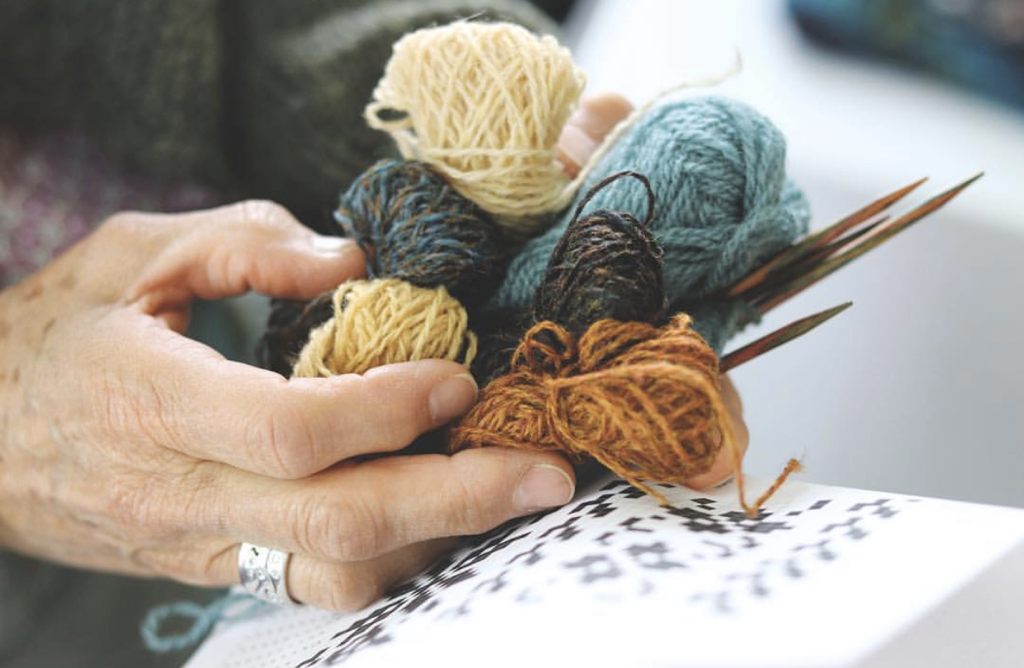
As a born and bred Shetlander knitting will have a long tradition in your family. Can you tell me a little about the knitters in your family? Are there any interesting stories?
When I was growing up everyone around me was knitting, my mother, sister, aunts and neighbours. For me it was interesting as I was always watching what was being knitted and the colours used. Knitting was not a hobby, it was a necessary income to add to the economy of the family. It was a convenient way to produce clothing too. Maybe we did not fully appreciate beautiful garments knitted for us. School photos can confirm how much was made. I wish we had examples, but it was so common and was passed to relations and would have been worn out.
And you must be very proud of your granddaughter Terri who is continuing the family tradition.
I am very proud of Terri my granddaughter who is making her own way in the knitwear world. She has a distinctive eye for design and has already visited many places teaching and sharing her skills. My daughter and some other granddaughters are knitting Fair Isle too. It makes me happy to see them enjoying knitting which has been a huge part of my life.
How do you see the future of knitting and indeed the whole textile industry in Shetland?
I see the future of knitwear in Shetland vibrant into the future. The coming of the internet has made a huge difference. We were beginning to think knitting was not so popular owing to synthetic materials, and cheaper clothing. Now wool, a luxury fibre, is being appreciated again for its timeless qualities. We have discovered the knitting world out there and many knitters coming to Shetland. Industrial knitting is also an important industry here.
Younger people are now being taught under the ‘Peerie Makkers’ organisation, and there is a new interest in learning to knit and design generally. I think it is essential that our knitting heritage is preserved.
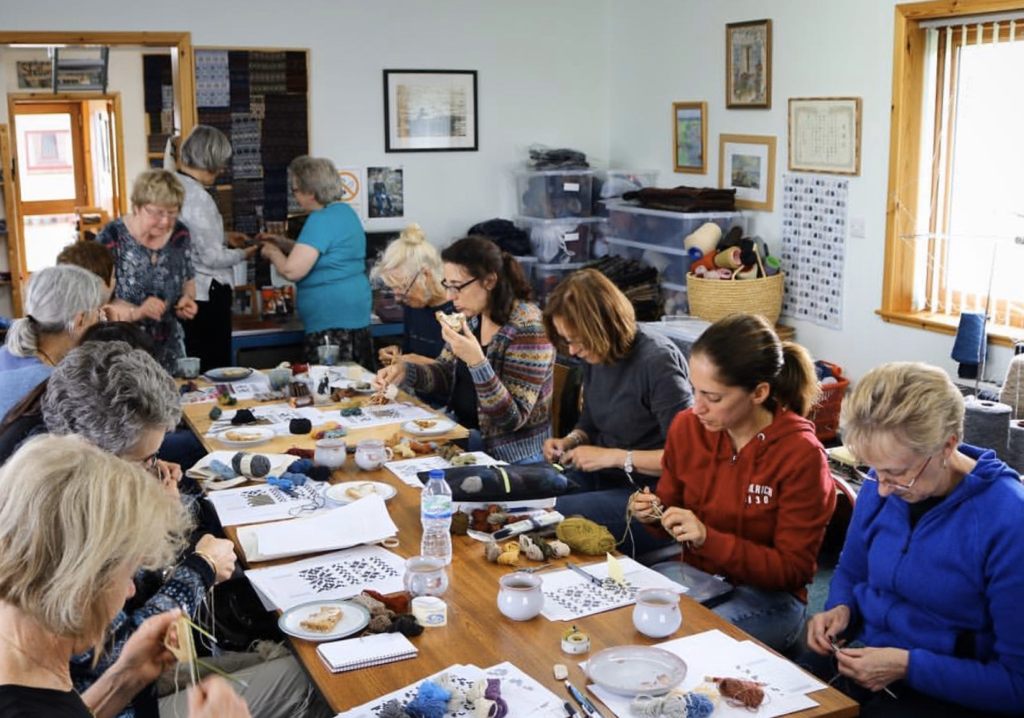
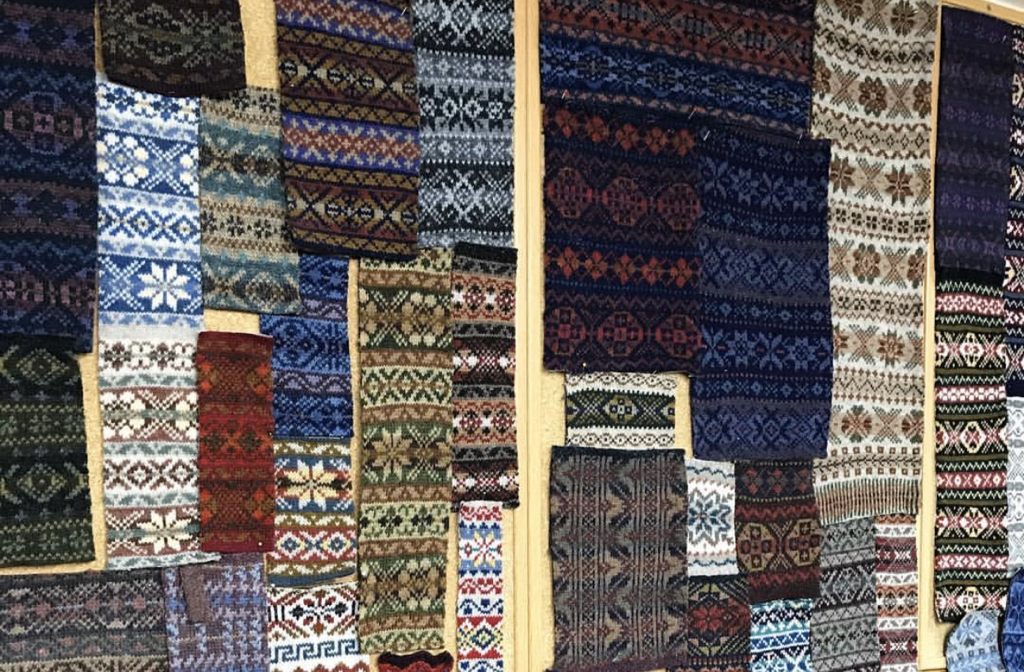
Would you have any advice or tips for anyone thinking of starting their own business?
Starting a business is very different now. As always it is hard work but rewarding. Believe in your product, always looking to supply the best quality and be ready to adapt to changing circumstances.
Going back to your design work – can you let us know what you’re currently working on?
I have been designing various colourways and making swatches for future projects and working out a pattern for sale later in the year. It is important to keep updating colours and patterns as well as appreciating existing best sellers.
Can you describe your usual working day?
There is never a usual working day! We may be washing knitwear, checking for flaws, pressing, packing, posting etc. Checking stock of yarn, putting together the orders to give to knitters. I always say I am the manager, cleaner and tea maker! Designing new colourways or styles, machine knitting or finishing, talking to customers and visitors. Writing patterns for various items. Much time is spent on the accounts and internet. Irene who works with me is very experienced in knitwear and we have a very good working relationship. A day seldom ends the way you expected.
All those who run a small business know that you have to be a master of many trades in order to keep the business going – so often the plans for day-to-day working have to change. I’d love to hear what your ideal work day would look like?
I have never thought what a perfect day would look like! Its best to take everything as it comes and keep optimistic. Work hard and enjoy mixing with everyone who contributes to a small business.
What makes living in Shetland special?
Shetland is special for the way of life we enjoy here. People around us are usually friendly and helpful to each other. You can think of Shetland as in the centre of sea routes, rather than being remote. We are therefore cosmopolitan with people visiting from many countries. Our scenery has been described to me as ‘a postcard around every corner’!
We have vibrant fishing, aquaculture, agricultural, knitwear, yarn manufacture, food and offshore industries. Shetland is a busy with many festivals and events. Many visitors with special interests spend time in Shetland.
And what is your favourite place in Shetland?
I am very happy where I stay in Cunningsburgh and I have a love for Garderhouse on the west side where I was born and had a happy childhood.
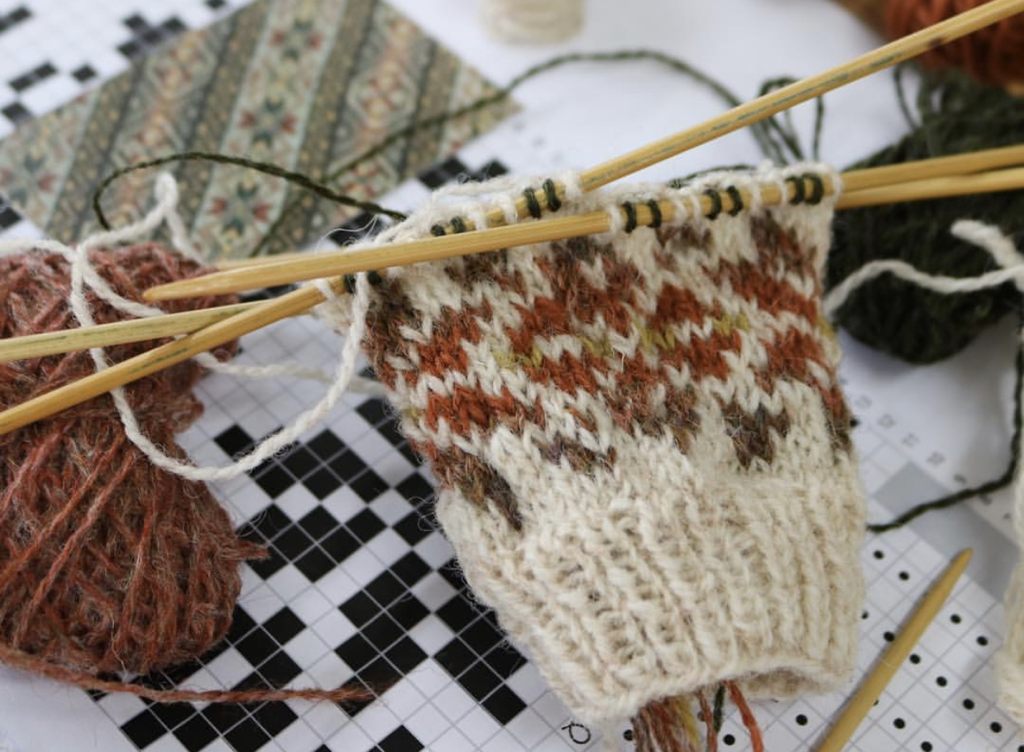
About time off – how do you switch off and unwind? Do you find knitting relaxing or are you always thinking about the next project?
I have been fortunate in that I have been able to travel with my family and through business. I have a very supportive family and enjoy spending time with them. I do find knitting relaxing and can be found hand knitting often. Knitting has been recently promoted as being therapeutic! This is not news to generations of Shetland knitters. My wise mother told me “If you’re ever worried about anything just tak your sock” (sock refers to any piece of knitting you may be working on)
And last but not least, what impact do you think Shetland Wool Week has had on Shetland’s textile industry?
Shetland Wool Week has had a major impact on Shetland textile industry.
It is growing every year as more and more people discover the various textile expertise we have here. Many knitters come for Wool Week time and time again. Some return in summer with family for a longer visit. It is interesting the exchange of knowledge, we too are learning many skills from our visitors and are travelling to share our traditions at other Textile Festivals. We have made many lasting friendships.
Thank you so much Wilma and and best of luck with being the Shetland Wool Week patron this year! You can download Wilma’s Shetland Wool Week 2020 hat pattern here.
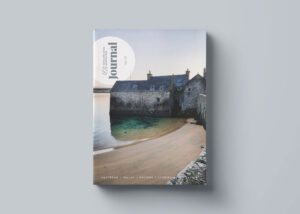


I have been knitting for a long time and love Shetland design and wools, and think that Shetland Wool Week is a fantastic way to show what is possible. I was planning to come up this year but due to the pandemic, this will be delayed another year. Meantime I would very much like to get the pattern for the zig zag yoke patterned jumper as in the main photo. Is this available to buy ?